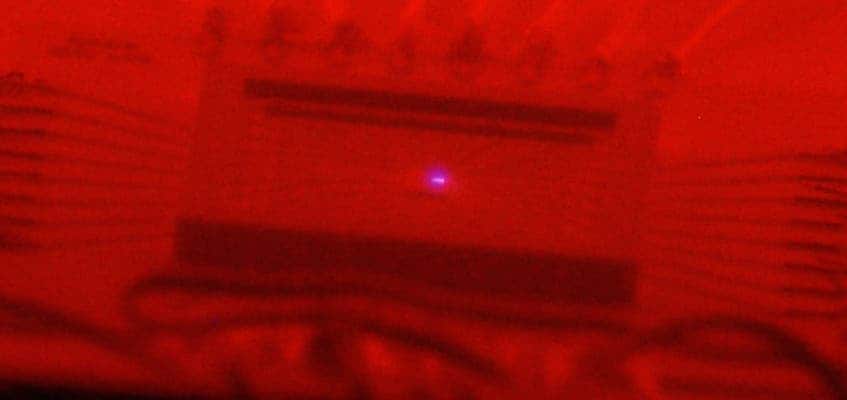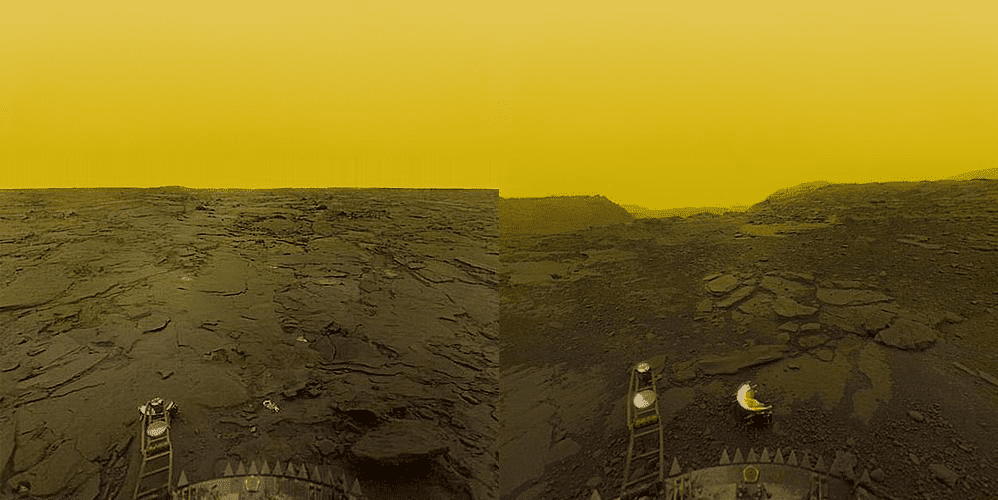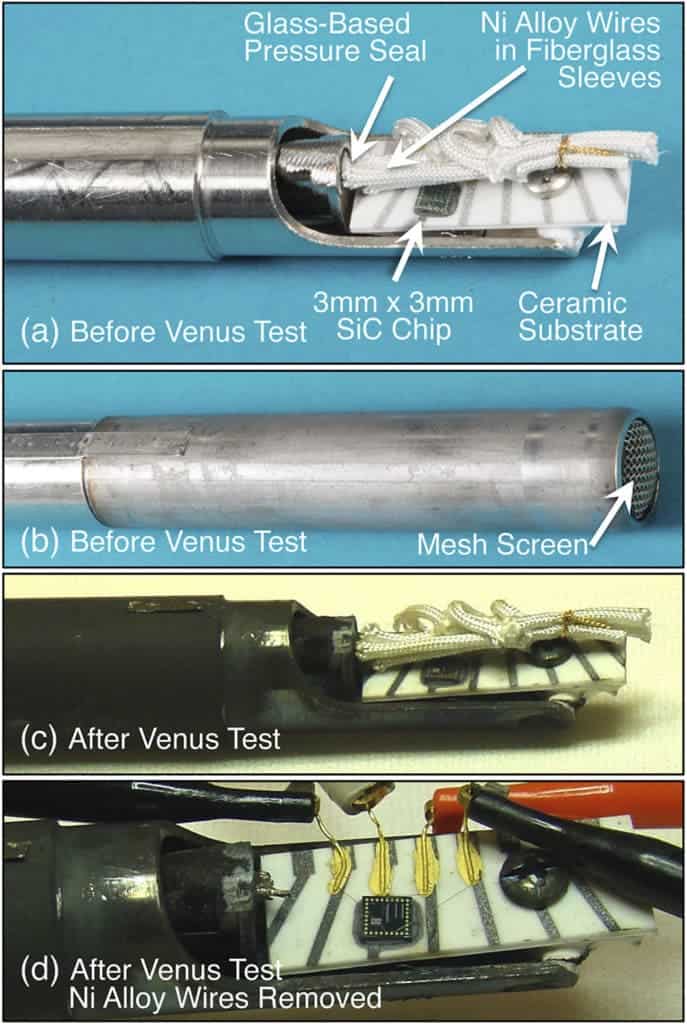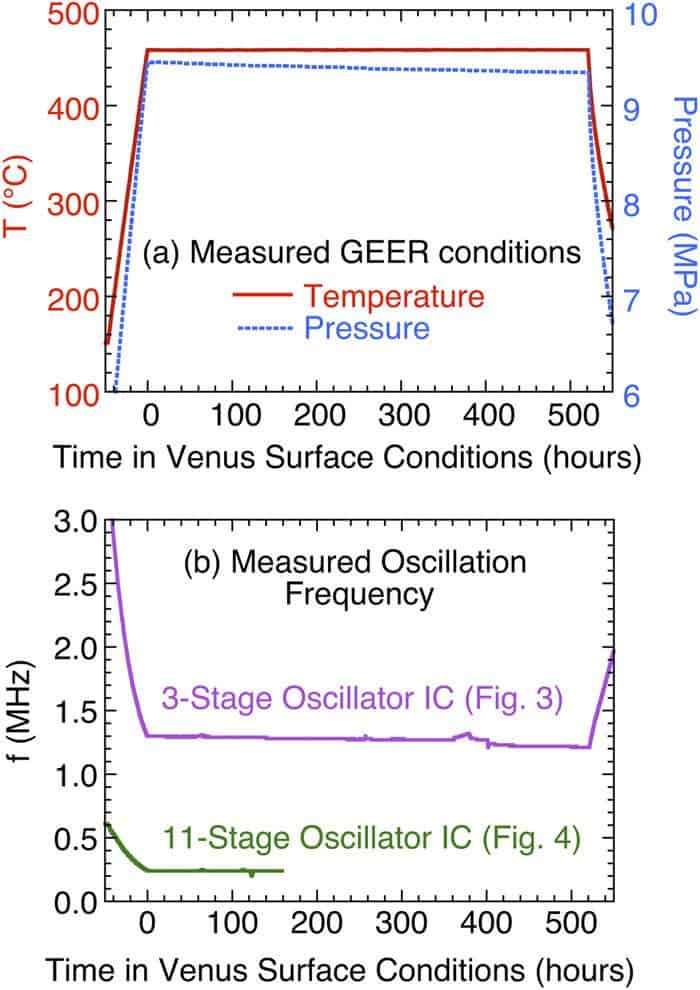NASA’s Glenn Research Center has developed a new class of computers that can withstand the hellscape of Venus. The devices are built from a different semiconductor than regular hardware, which can carry more voltage at much higher temperatures.

Image credits NASA / Glenn RC.
Mars has been getting a lot of attention as humanity’s first planned colony. So it’s easy to forget that it’s neither the closest nor the most Earth-like terrestrial planet in the Solar System. Both those distinctions belong to Venus — so why aren’t we looking towards it for our otherworldly adventures?
The goddess of love and beauty
Well, the thing is that Venus is awful. It’s an objectively dreadful place, a scorching hot ball of rock covered in thick clouds of boiling acid. Ironic, right?
These conditions not only make it nigh-impossible for real-estate agents to put a positive spin on the planet, it also makes it frustratingly hard to explore. Any mission to Venus has to work around one simple fact: your run of the mill computer wouldn’t like it there. Normal silicone chips can still function up to 240-250°C (482°F). After that, the chip turns from a semiconductor into a fully fledged conductor, electrons start jumping all over the place, and the system crashes.
The longest any human-made object has made it on Venus is 127 minutes, a record set in 1981 by the Soviet spacecraft Venera 13. It was designed to survive for only 32 minutes and used all kinds of tricks to make that happen — such as cooling of internal systems to -10°C (14°F) before entering the atmosphere, hermetically sealed internal chambers for instruments, and so on. Venera braved sulphuric rain, surface temperatures of 470°C (878°F), and an atmosphere 90 times that of Earth long enough to capture the first color pictures of the planet’s surface.

Image credits Morbx / Reddit.
After the mission, the Soviets flew three more crafts to Venus — Venera 14, Vega 1, and Vega 2 — making the last attempted landing on the planet in 1985.
Since that time, the transistor industry has developed alternative materials it can use for integrated systems. One of the most promising class of materials are silicon carbides (SiC). Their ability to support high voltages at huge temperatures has already drawn interest from the military and heavy industries, and make them ideal for a mission to Venus.
NASA’s Glenn Research Center has developed two prototype SiC chips which can be used in future Venus missions. The researchers have also worked to overcome another vulnerability of traditional integrated circuits: they’ve developed interconnects — the wires that tie transistors to other hardware components — which can withstand the extreme conditions on the planet.
Five hundred hours of fire

Image credits NASA / Glenn RC.
To see if the technology lives up to expectations, the team put these SiC transistors and interconnects together and housed them in ceramic-packed chips. The chips were then placed in the GEER (Glenn Extreme Environments Rig) which can simulate the temperatures and pressures on Venus for hundreds of hours at a time.
One of the chips, housing a simple 3-stage oscillator, kept stable at 1.26MHz over 521 hours (over 21 days) before the GEER had to be shut down. The second chip fizzled out after 109 hours (4,5 days), but NASA determined that it was caused by faulty setup, not the chip itself.

This performance is a far cry from that seen in the 80’s, especially considering that the chips didn’t benefit from any pressure vessels, cooling systems, or other types of protection. It’s the first system shown able to withstand the condition on Venus for weeks at a time.
“With further technology maturation, such SiC IC electronics could drastically improve Venus lander designs and mission concepts, fundamentally enabling long-duration enhanced missions to the surface of Venus,” the researchers conclude.
But it’s not only transistors we’ll need for a successful Venus rover. Drills, cameras, wheels — everything has to be adapted to work in a high pressure, high temperature, highly acidic environment. Materials science has evolved a long way since the last missions, so creating a mechanically-sound lander should be feasible. A full-fledged rover with multiple moving parts that can survive on Venus would be a lot harder to develop — NASA Glenn is working on such a machine, a land-sailing rover, which they estimate will be ready by 2033.
The full paper “Prolonged silicon carbide integrated circuit operation in Venus surface atmospheric conditions” has been published in the journal AIP Advances.






